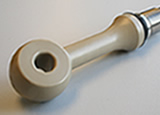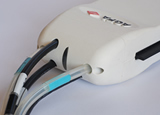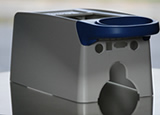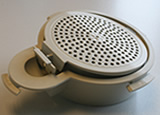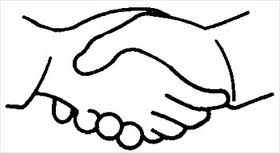
Moldflow warpage simulation
Warpage in an injection molded part is caused by shrinkage variations throughout the part.
Shrinkage of plastic part is driven by the volumetric change of material as it cools down from the melt state to solid. It must be noted that shrinkage itself does not cause warpage. A high uniform shrinkage will give a perfectly shaped part that is simply smaller in size. However, if regions of the part shrink unequally, stresses are created within the part. D epending on the part stiffness, this may cause the part to deform (i.e. warpage) or even crack in the long term.
The fundamental causes of shrinkage variations (and consequently warpage) are:
1) Differential Cooling
===================
Non-uniform cooling causes shrinkage variations through the thickness of a part. Aspects which influence the shrinkage variations due to differential cooling are:
- thermal properties of the mold
- variations in wall thickness' of the part
- uneven temperature across the mold
2) Differential shrinkage
=====================
This results in shrinkage variation across the part surface (i.e. parallel and perpendicular to the flow). Differential shrinkage can be caused by:
- wall thickness variations
- gate location
- cooling line design and –parameters
- processing conditions (for example packing profile)
3) Material orientation effects
==========================
This results in different amounts of shrinkage parallel and perpendicular to the flow. Shrinkage due to orientation effects can be caused by:
- polymer orientation (molecular or fiber)
- gate position(s)
- cooling line design and –parameters
- processing conditions
Causes of shrinkage variations
Using Moldflow, we are able to isolate each individual cause of shrinkage variations (see list above) and determine its effect and contribution on part warpage. By identifying the primary cause of warpage, we can suggest specific part- or mold design modifications, or optimize processing parameters (for example modified packing profile).
The part- and mold designer can improve the dimensional stability of a product by considering the overall contributers of part warpage. These contributers are devided into the following (genaral) groups:
Part design
==========
- polymer molecular structure (crystalline or amorphous)
- polymer fillers
- wall thickness
- part stiffness/shape
- wall thickness variations
Mold design
==========
- gate locations (critical in warpage)
- gate design
- runner design
- cooling system configuration and layout
- ejection system (prevent overstressing of part at ejection)
Processing conditions
==================
- mold temperature
- melt temperature
- injection time
- packing time
- packing pressure
